Barracuda SecureEdge Manager allows you to create an inline bridge setup for a new stand-alone site by bridging a WAN with a LAN during initial deployment via the setup wizard. You can also edit or configure an inline bridge deployment later through the Sites tab. Inline bridges are available only for stand-alone sites, which includes both HA and non-HA.
Create an Inline Bridge
Go to https://se.barracudanetworks.com and log in with your existing Barracuda Cloud Control account.
The chosen Tenant/Workspace is displayed in the top menu bar.
From the drop-down menu, select the workspace your appliance should be assigned to.
Go to Infrastructure > Sites.
The Sites page opens. In the top-right corner of the window, click New site.

The New Site Basic Information blade opens. Enter values for the following:
Name – Enter the name of the site.
Edge Service – Select (None).
Root Password – Enter the root password.
Confirm Root Password – Retype the root password to confirm.
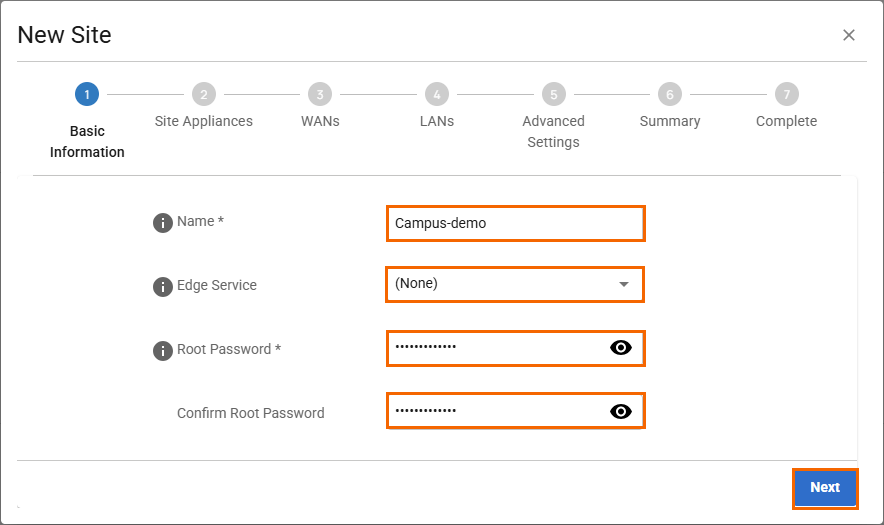
Click Next. The Site Appliances blade opens.
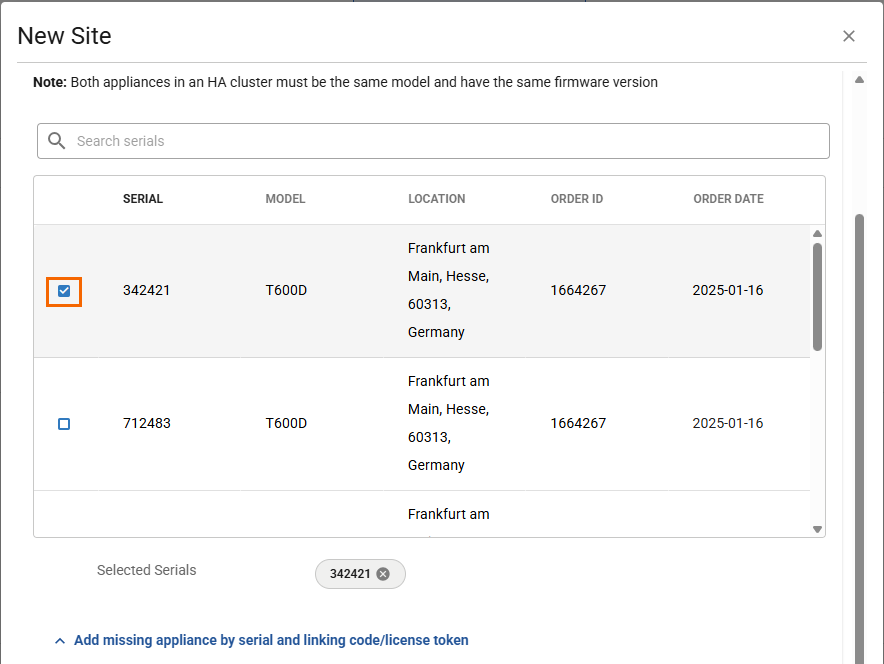
Select your appliance from the list of appliances linked to your account. For a high availability cluster, select two appliances. For more information on high availability, see High Availability. Note: After ordering, it might take up to 3 hours before your device is listed.
Click Add missing site appliance by serial and linking code/license token.
Then, specify values for the following:
Serial – Enter the serial number of your appliance.
Code/Token – Enter the linking code (located on the back of the Quick Start Guide shipped with your hardware appliance), or the token of your VTx appliance.

Click Add to add the device to your account.
Click Next. The WANs blade opens.
Select the number of desired WAN connections from the drop-down list.
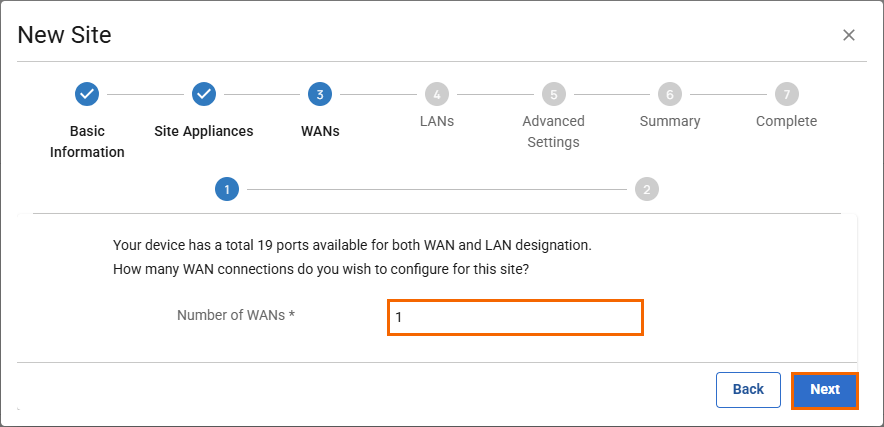
Click Next. The Configure WAN link blade opens.
Specify values for the following:
Name – Enter a unique name for your WAN link.
Type – Select Bridge from the drop-down list.
WAN Port – Select the WAN port from the drop-down list. Note: Port 1 is reserved for High Availability. For example, in this case, the selected WAN port is P2.
WAN Virtual LAN ID (Optional) – Enter the virtual LAN ID for the WAN.
IP Address – Enter the network IP address assigned to the appliance.
Netmask – Enter the CIDR netmask suffix.
Gateway – Enter the gateway IP address.
LAN Ports – Select the LAN ports this interface is connected to and click +. Note: You can add more LAN ports according to your requirements. For example, in this case, the selected LAN port is P6.
Provider Pinning – Select a provider classification from the drop-down list.
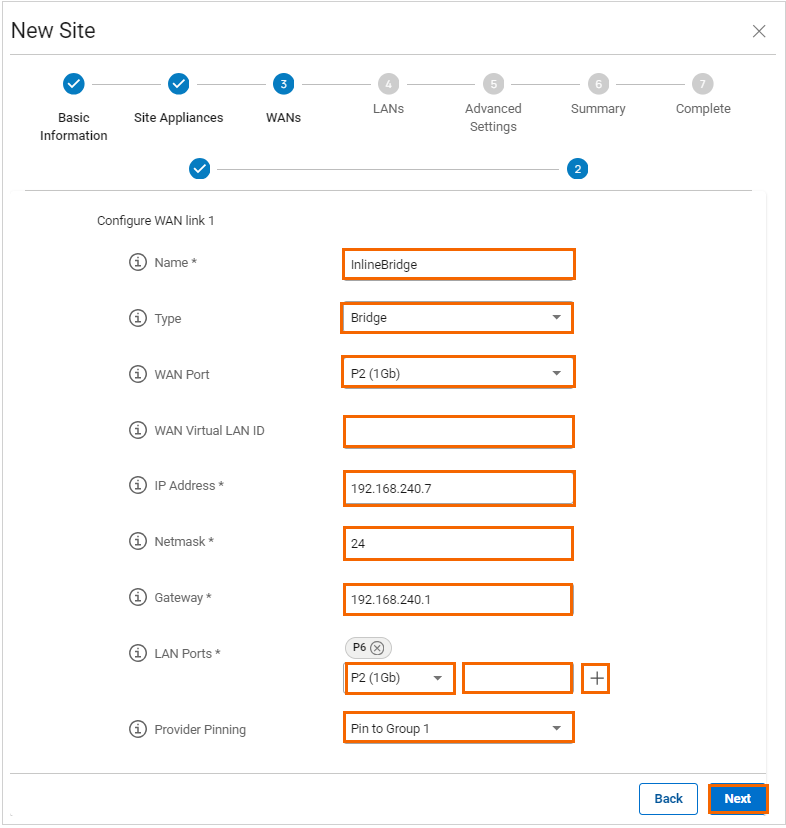
Click Next. The LANs blade opens.
Select the number of desired LAN connections from the drop-down list.
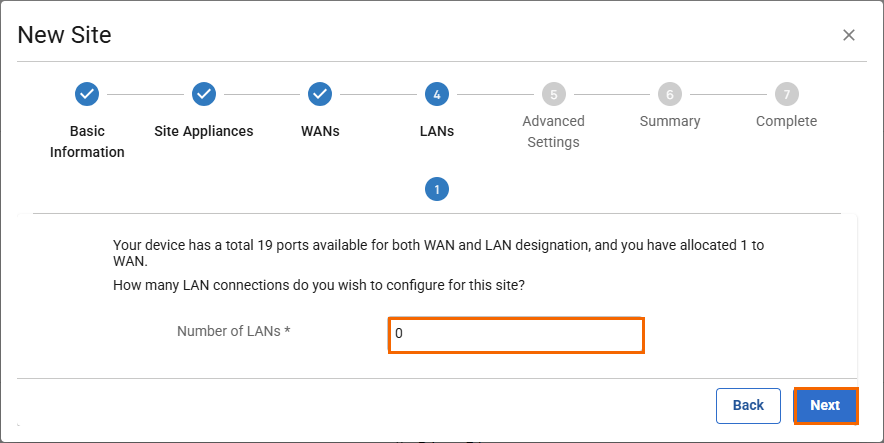
Click Next. The Advanced Settings blade opens.
Specify values for the following:
Update Window Timezone – Select Dynamic from the drop-down list, or select the time zone where the box is located.
Primary DNS – Enter the IP address of the primary DNS server.
Secondary DNS – Enter the IP address of the secondary DNS server.
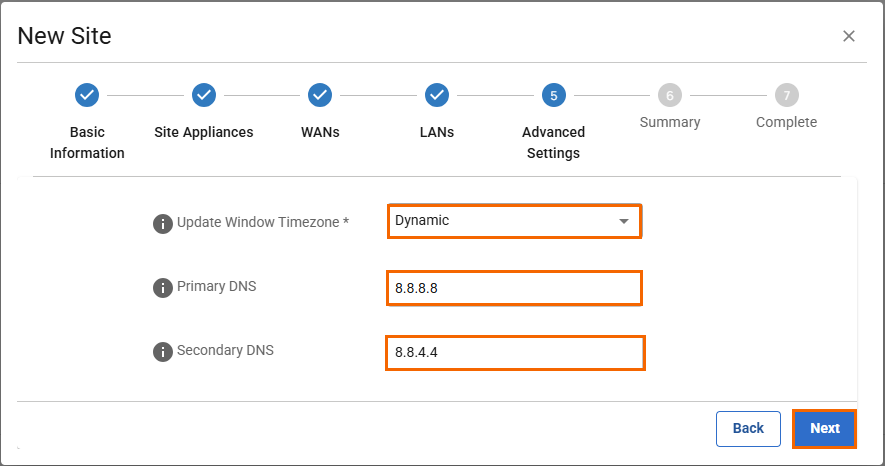
Click Next. The Summary blade opens.
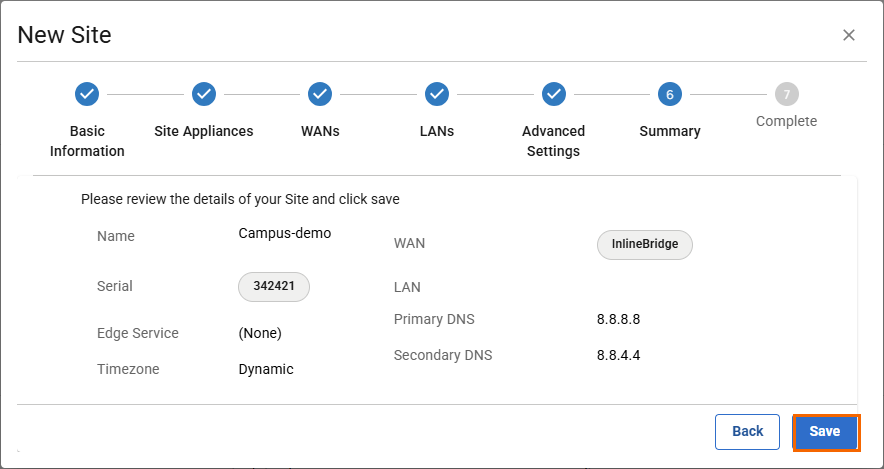
Review your specifications. If everything is correct, click Save.
After your site configuration has been created successfully, click Finish.
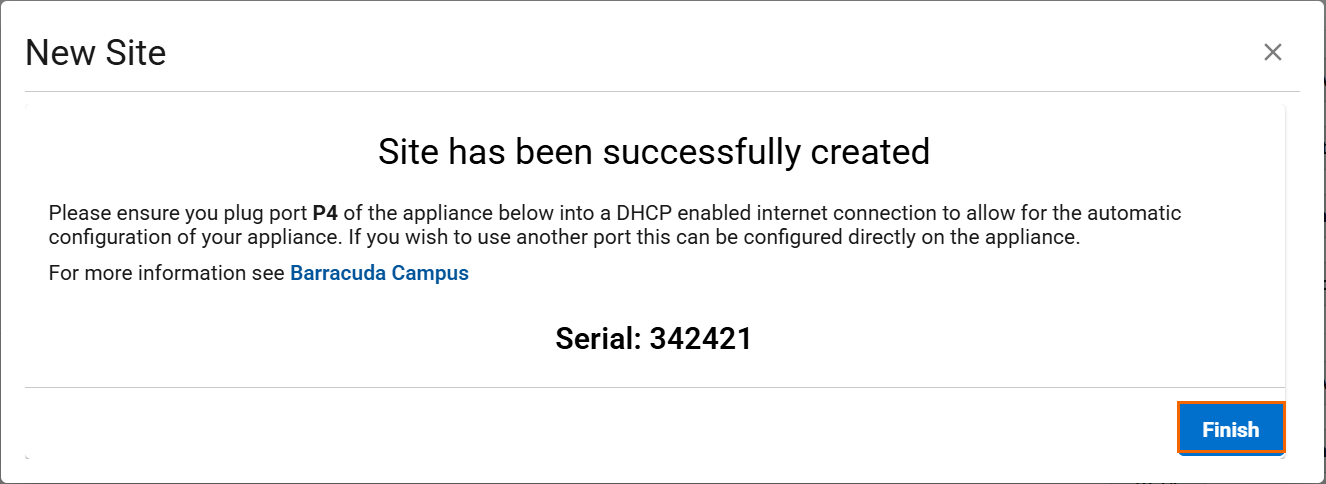
The appliance will automatically apply the configuration upon its first boot.
After configuration is complete, you can see a bridge is created across selected ports. Bridges can now be used in the same way as LANs are used in security policies.
